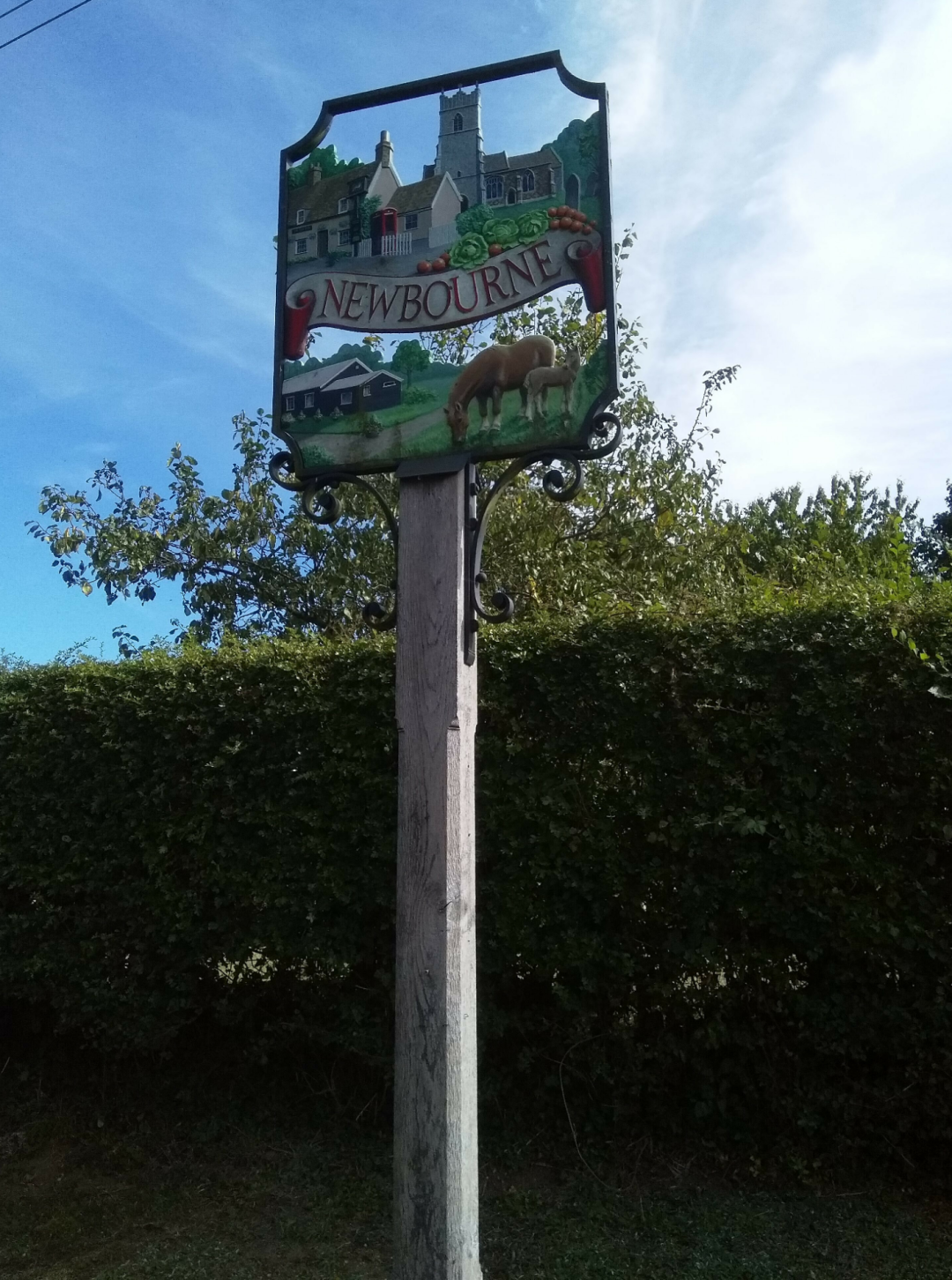We begin our walk in this little village at the car-park next to the village hall in Mill Road.
SatNav; IP12 4NP.
You may have noticed on the way in that the outlying reaches of this village seem to contain quite a number of large greenhouses. This isn’t coincidence. In 1934 when the village population was less than 100 the Land Settlement Association chose Newbourn as one if its experimental sites aimed at giving unemployed men a basic training in agriculture and then providing them with smallholdings and (sometimes) cattle. This scheme ended at the outbreak of WW2 and was dissolved in 1983. However the remaining nurseries and roadside stalls give this place a very unique and rural feel that lends itself to a pleasant and nostalgic setting off the “beaten track”.
Newbourne, until quite recently Newbourn, is mentioned in the Domesday Book as Neubrunna, thought to derive from the Old Norse for nine springs, more of which later.

At the front of the village hall is the main road, Mill Road and we have to turn right here and head north, towards the traditional village hub of church and pub. On the left, hidden behind an ancient wall is Newbourne Hall, a fine old Grade I Listed building, essentially a Tudor Manor House, with the earliest parts dating from the 14th Century. It is still a privately owned property but you can book an appointment to view some of the splendid architecture inside and out, including a 17th Century decorative plaster ceiling. Tickets are just £10.
Past the Hall we soon arrive at a fork and take the road left Ipswich Road and after a little way we arrive at the pleasant little St Mary’s Church high above the little cluster of houses below that is the heart of this pretty ancient village.
In the graveyard here there are headstones to members of the Page Family, now weathered and barely legible. Here we begin to catch a glimps of genuine local folklore…… the Newbourn Giants.
George Page and his brother Meadows were Newbourne men through and through, possibly the village’s most famous sons. They worked as agricultural labourers, as did a large percentage of all Victorian rural men in a time when life really was tough. It was hard physical work, everything was labour-intensive, there was no machinery or gadgetry to aid the harsh conditions. It was a long working day and a long working week with workers barely above starvation, the average weekly wage at the time was about 12shillings, barely enough to cover board and lodgings. But for the Page Brothers there was a good way to supplement their meagre wages. George was 7′ 7″ (about 2.3m) and younger brother Meadows was 7′ 4″ (about 2.2m). They must have literally towered over the simple little folk of this remote part of Suffolk. So, as something of a curiosity they used their height to their advantage and showed up at various Fayres and Country Shows, most notably the Easter Fair in Woodbridge. Here George would hold a sovereign at arm’s length above his head and challenge any comers to reach it from his hands! A fine little act, although I can’t find any record of anyone successfully grabbing the coin. I somehow doubt it. In any case, like most extreme conditions there was an underlying illness and George died in 1870 aged just 26. Meadows survived to retirement age, dying in 1917 having returned to farmwork at Newbourn Hall estate, marrying and having a daughter too.
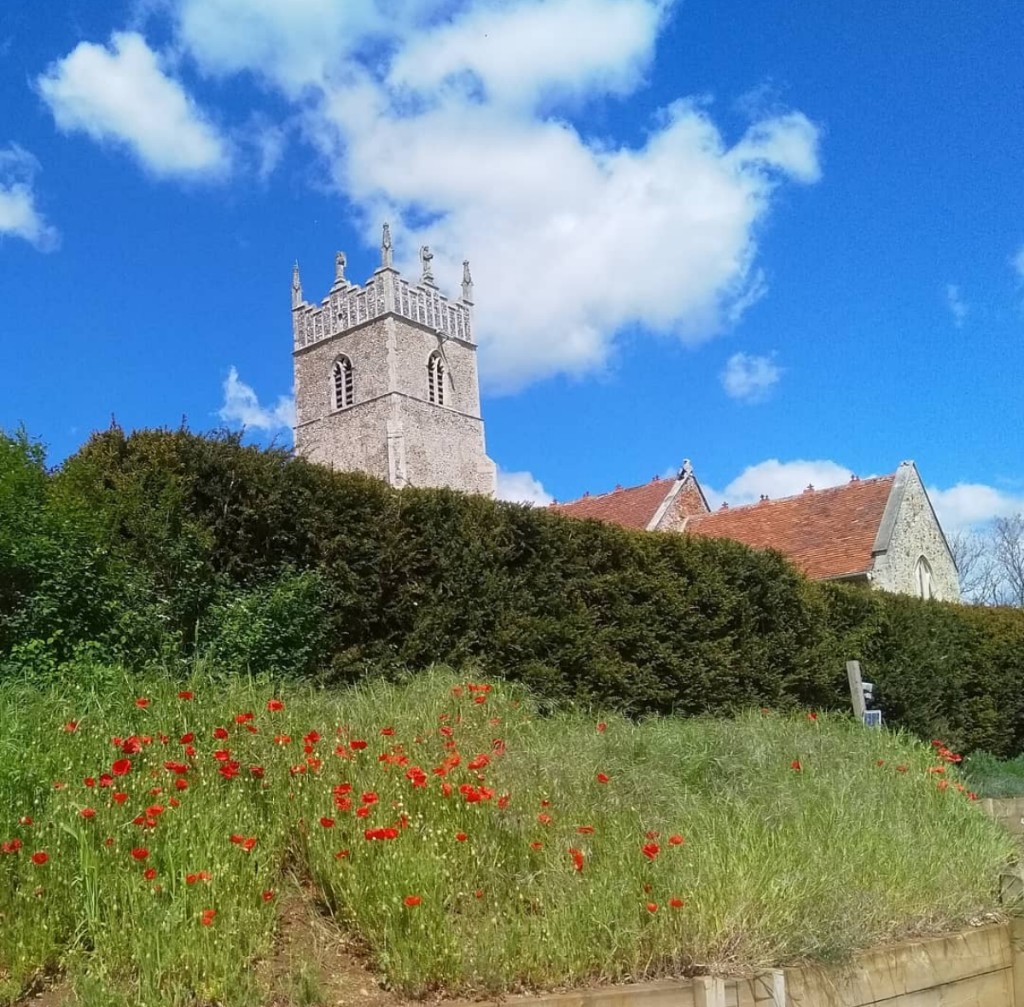
Back to the church now, a lovely rural mediæval church with parts actually dating from the 12th Century. During what is now called the Great Storm in October 1987 the east window was blown out by ferocious winds of up to 80mph. It was subsequently decided to replace the old Victorian stained glass with a new fresher design. And so a new commission was begun on the Face of Christ, and this cleverly included fragments of the original window found amongst the rubble after the storm.
Now retrace your steps back to the road junction and turn left into The Street, where a little way down, just past the old Methodist chapel on our left is the village “local” the Fox. This old 17th Century inn is hugely popular, especially in the Summer when there are cars everywhere! There is a local tale that it was built from old ship’s timbers and in its heyday it would have been a stopping point for coaches between Woodbridge and Felixstowe. It is the ideal opportunity for some “refreshment” if so desired. There can’t be many finer places on a sunny Summer afternoon with a lovely fish pond outside and a unique old skittle alley housed in an outhouse behind the car-park.
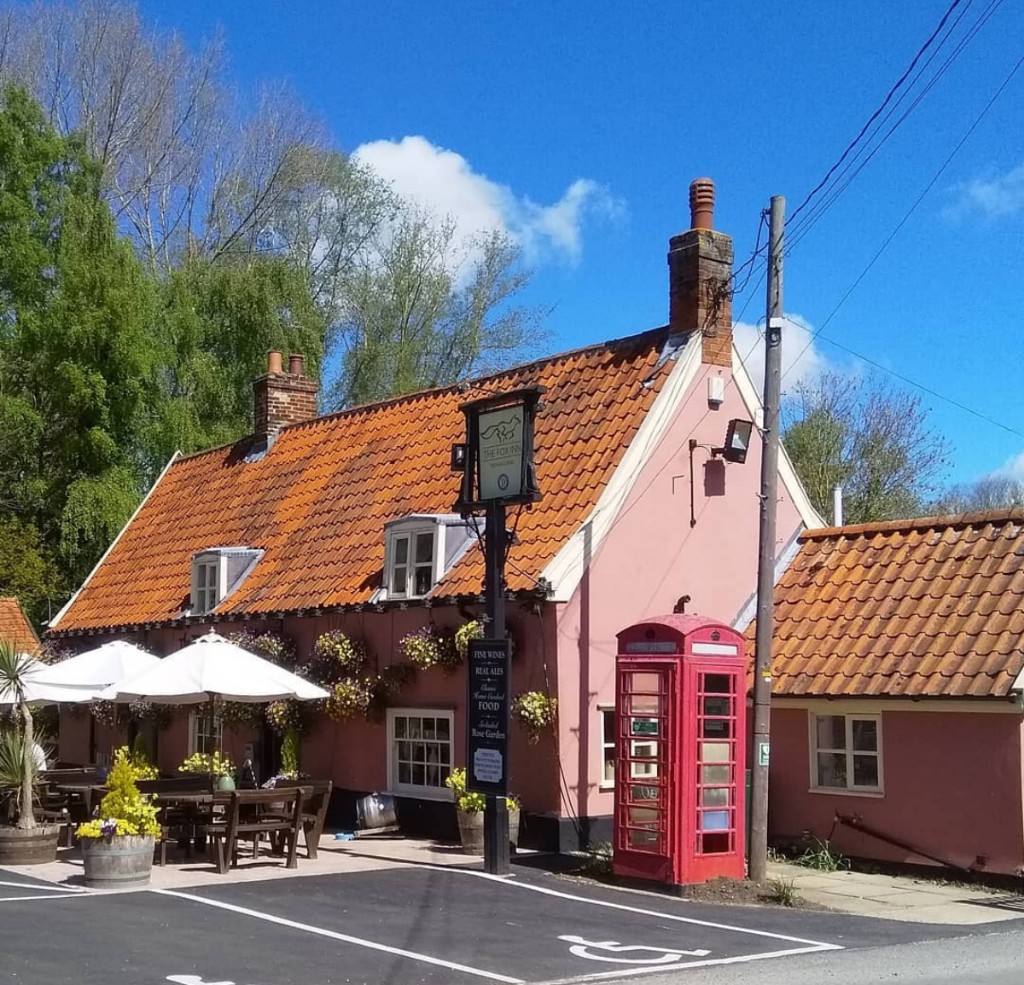
Continuing past the pub there are some lovely little cottages here, The Street is the historic beating heart of the village and just past the Fox you will find the old 19th Century Giants Cottage, once home to the infamous Page Brothers, the Newbourne Giants mentioned earlier. Then, set back from the road a pair of quaint Suffolk pink cottages known as Brook Cottages next to the brook or spring that flows around the village before joining Mill River that then spills into the River Deben at Kirton Creek.
There’s a road junction here, straight ahead and up the hill eventually leads to the tiny backwater that is Hemley and (perhaps another day) a lovely walk down to the Deben. But we must turn left into Woodbridge Road and then almost immediately on our left is the signposted car park for Newbourne Springs Nature Reserve. A quick warning for those arriving by car this car park is very small, no more than 6 cars capacity and consequently often full. Another warning, the going underfoot (especially in the Spring and Autumn) can be very boggy and wet. It is after all, marshland with springs running along a small wooded valley. The site measures no more than 40 acres (about 16 hectares). It is managed by the Suffolk Wildlife Trust on behalf of Anglian Water and the Reserve has been designated as an SSI a Site of Special Scientific Interest. And it certainly is that. The walk, which seems quiet, almost church-like cuts quickly to a boardwalk with every chance of hearing an elusive nightingale. The woods above are literally teeming with wildlife here with birds such as nuthatch, goldcrest, treecreeper and woodpecker. And by the stream there are plenty of colourful marsh marigolds and primroses throughout Spring.
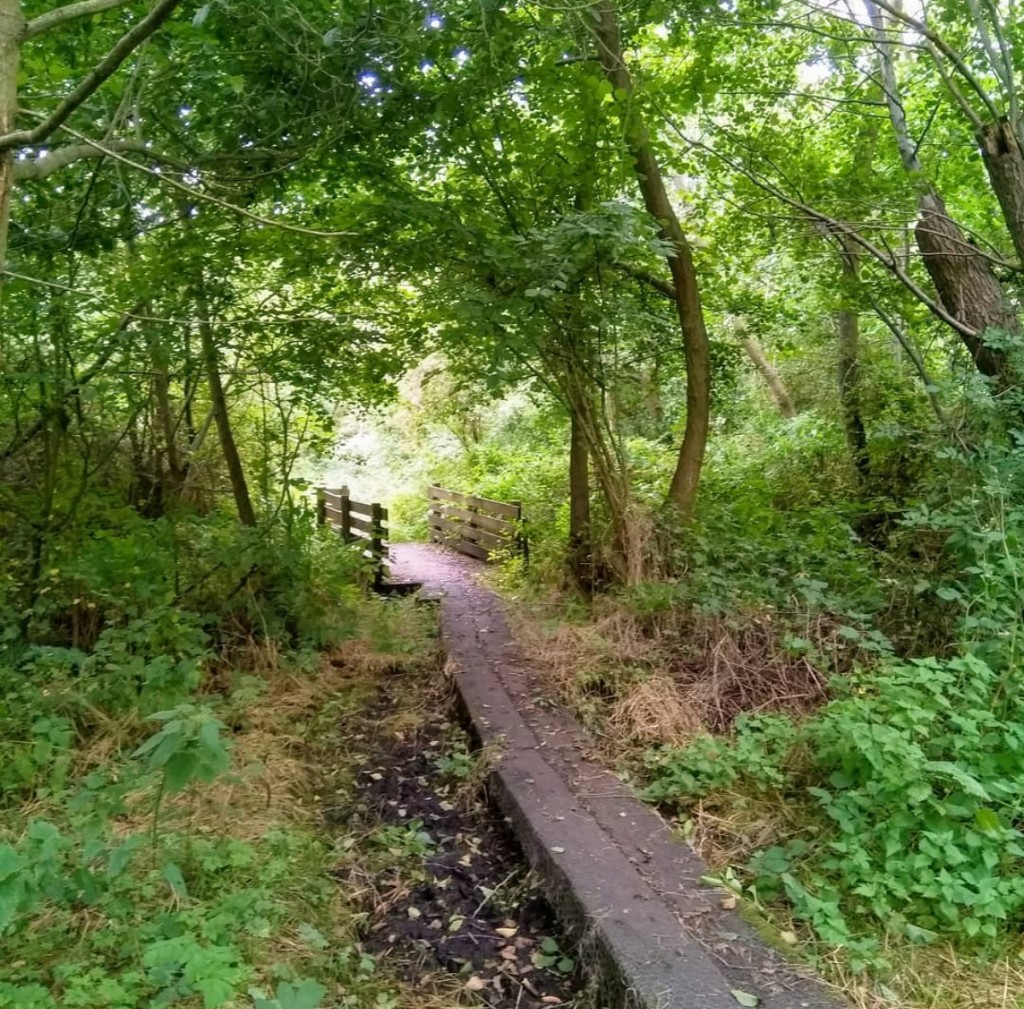
The Springs or Brook soon appears, a gentle, cool flowing little stream that belies a fascinating history. 12 miles south of here lies Felixstowe (coincidentally also originally spelt without an e at the end). This tiny fishing village grew rapidly into a major seaside resort after Colonel Tomline developed the dock and railway from 1875. Consequently the burgeoning new town population had to find a good reliable source of water and Newbourne was chosen, engineers quickly building a pumping station here that supplied the Town until the 1970s when Alton Water Reservoir was opened.
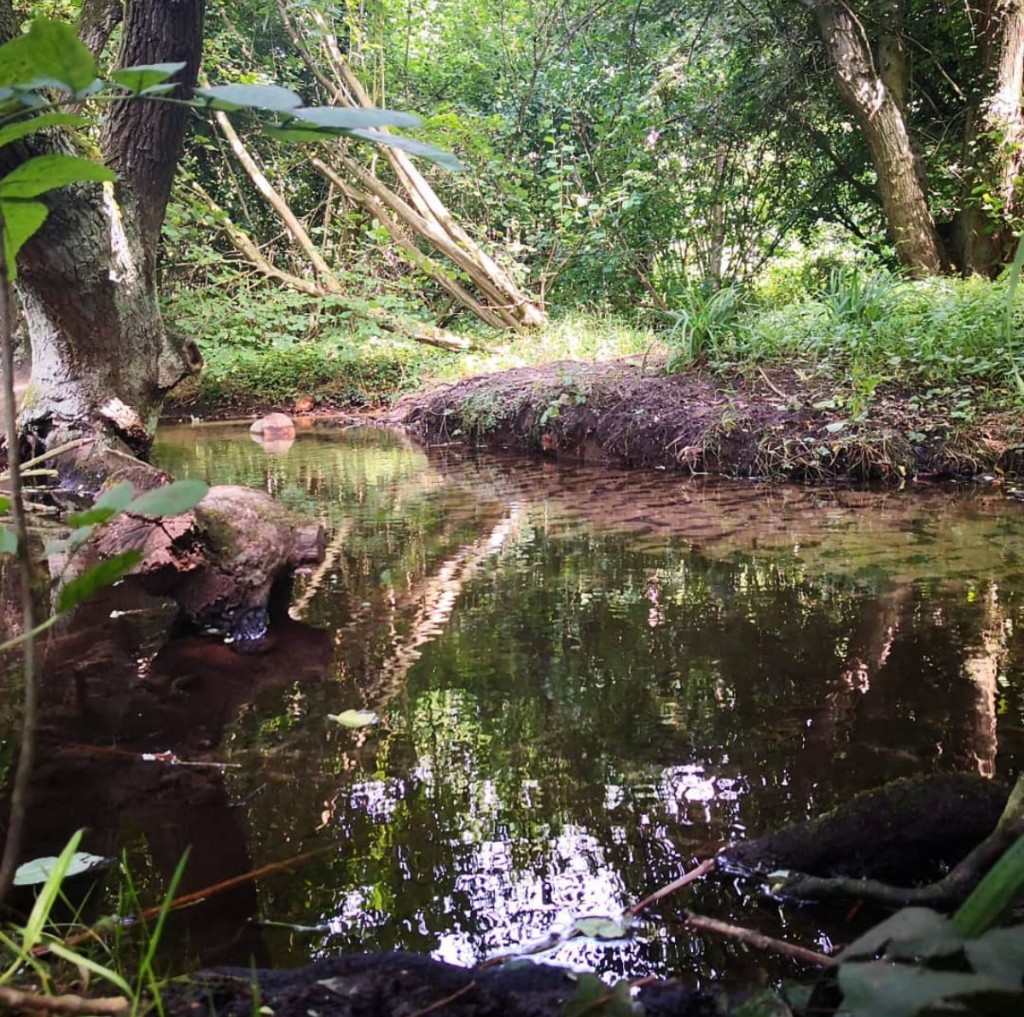
Heading into dense woodland, resplendent with bluebells in late Spring there is a gateway on your left after a while, beyond is a wonderful old-fashioned meadow often with grazing sheep. And not just any old sheep, but shy striking Black Hebridean Sheep. If you feel like cutting the walk short you can go through this gate and turn left but we will plough on climbing a gentle slope heading up to the high ground surrounded by beech and oak trees with hazelnut groves and sloeberry bushes all around. Eventually, at the “peak” there is a left turn and a stepped boardwalk gently heading back down to a dark, damp path through speedwell and nettles, skirting left again to catch sight of the sheep meadow that, in early Spring can be a riot of the beautiful common spotted orchid. Again, you might spot a few Black Hebridean Sheep mentioned earlier. Hebrideans are a tough and hardy breed, able to thrive on rough grazing, and consequently often used as conservation grazing animals to maintain natural grassland or heathland habitats. They are, apparently particularly effective at scrub control, having a “strong preference for browsing”
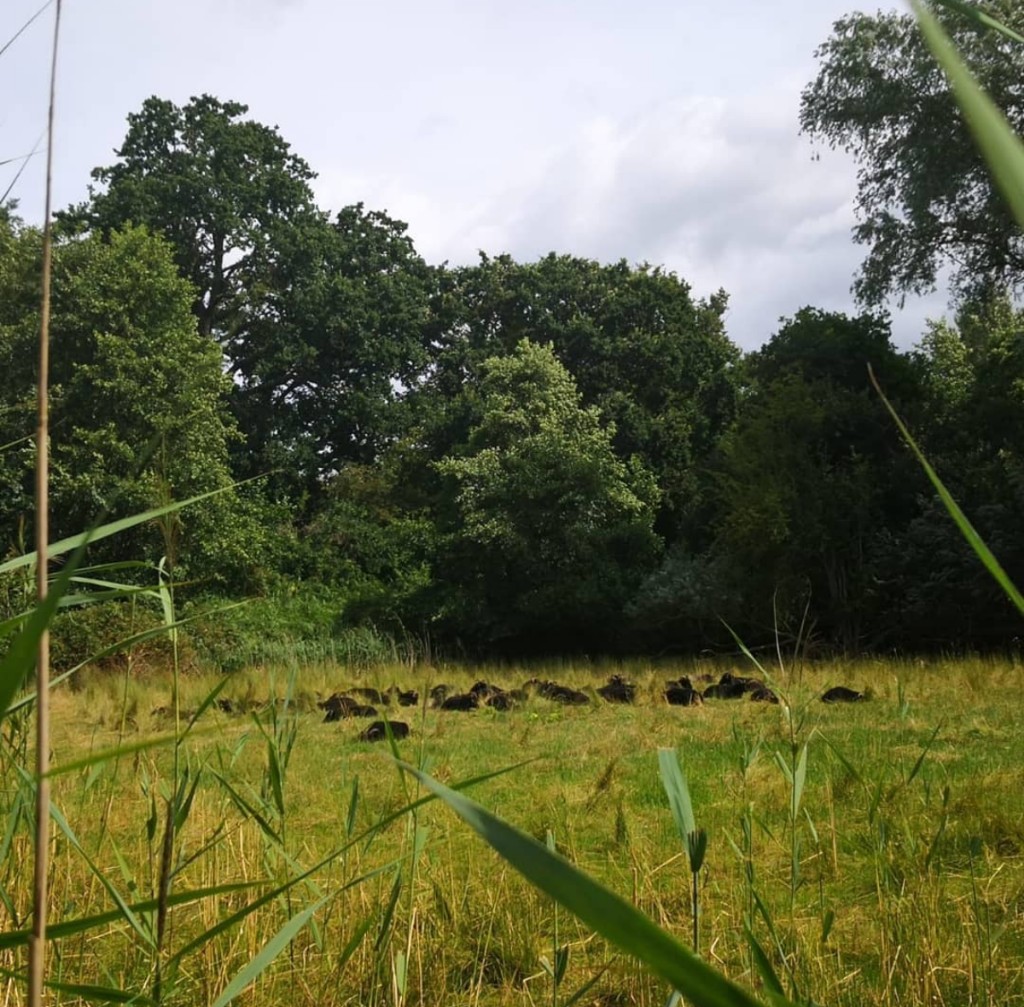
From the meadow we now keep straight on following a clearly waymarked trail that eventually leads to Fenn Lane, written in old OS maps as Pit Lane, in reference to the many crag pits found throughout this part of Suffolk. Crag is a distinctly East Anglian term for pebbly or shelly sand. A prehistoric ridge of Coraline Crag cut into the County with deposits of shell that were later quarried in pits for use as a very basic cement. Examples of this crag can be seen in some local churches and even in nearby Orford Castle.
Fenn Lane eventually reaches the main road again just behind the Fox pub and perhaps this affords the intrepid hiker a chance of a well-earned rest with some timely refreshment and certainly an outdoor table if the sun is shining before heading back to the village hall and the car-park.
